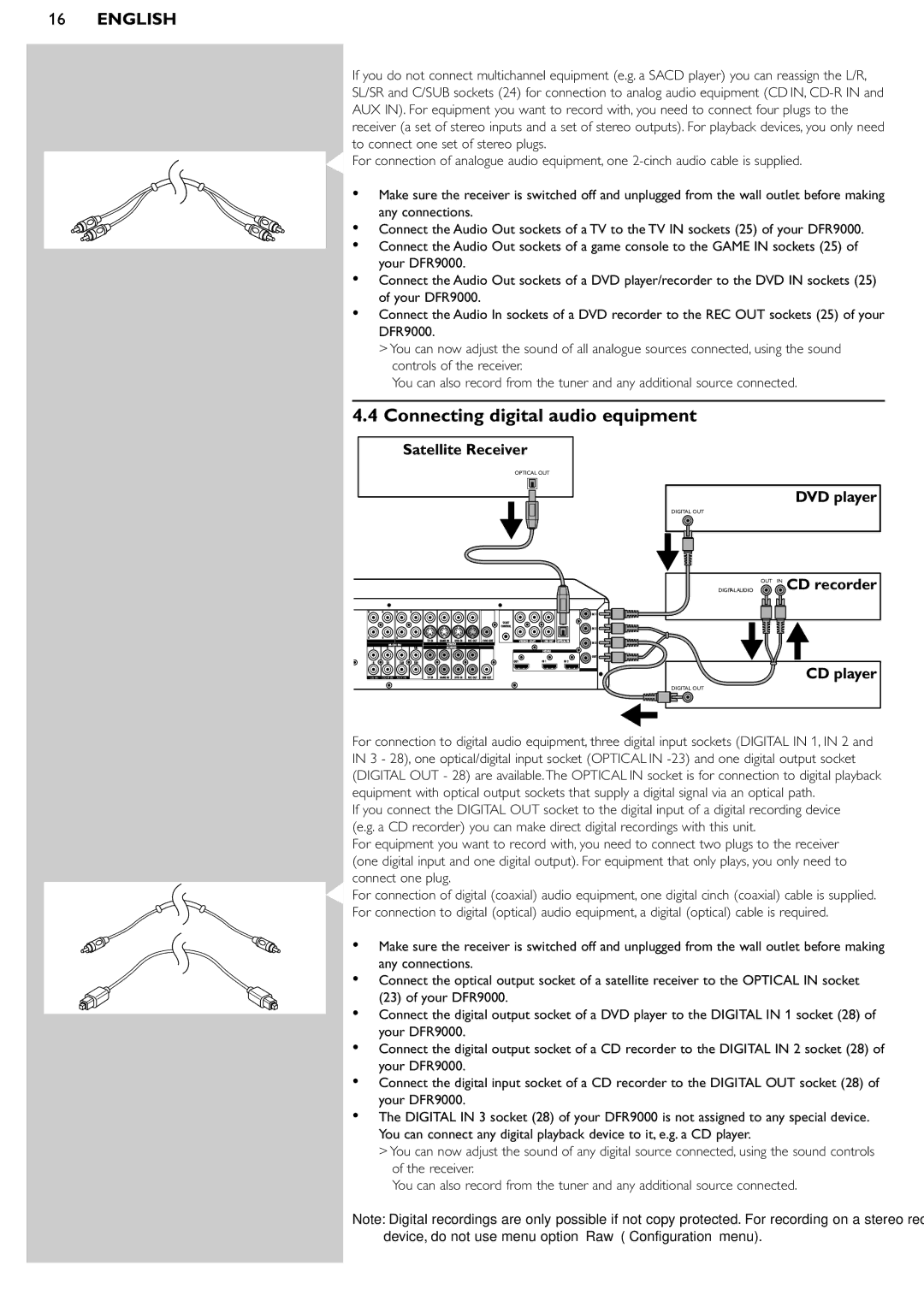DFR9000 specifications
The Philips DFR9000 is an innovative addition to the world of home entertainment, integrating advanced technologies and user-centric features that elevate the viewing experience. Whether you are a movie enthusiast or a gaming aficionado, the DFR9000 promises to deliver an immersive and captivating experience.One of the standout features of the DFR9000 is its Ultra HD resolution. With 4K capabilities, the television provides stunning clarity and detail, allowing viewers to appreciate the finer nuances in their favorite movies and shows. The high dynamic range (HDR) technology further enhances this experience by improving contrast and color depth, rendering images that are more lifelike than ever before.
In terms of sound quality, the DFR9000 excels with its integrated surround sound system. The inclusion of Dolby Atmos technology creates a three-dimensional sound environment, placing viewers at the center of the action. This feature ensures that audio complements visual elements, enriching the overall entertainment experience.
The DFR9000 is designed with connectivity in mind. It includes multiple HDMI and USB ports, facilitating easy connections to various devices such as gaming consoles, Blu-ray players, and streaming devices. Furthermore, it supports Wi-Fi connectivity and features various smart TV functionalities, enabling access to popular streaming services and apps, allowing users to enjoy a wealth of content at their fingertips.
Another impressive aspect is the advanced image processing capabilities of the DFR9000. Utilizing Philips’ proprietary technology, the TV optimizes every frame for clarity and motion performance, significantly reducing motion blur during fast-paced scenes. This is especially beneficial for sports and action sequences.
Smart features are abundant in the DFR9000, with voice control integration allowing seamless operation via virtual assistants. Users can navigate menus, adjust settings, and search for content with simple voice commands, making the entire viewing experience remarkably efficient and user-friendly.
In addition, the sleek design of the Philips DFR9000 enhances any living space. With its ultra-slim profile and minimalistic bezels, it not only serves as a powerful entertainment hub but also as an elegant piece of home decor.
Overall, the Philips DFR9000 combines cutting-edge technology, superior image and sound quality, robust connectivity, and smart features, making it an excellent choice for any home theater enthusiast.

